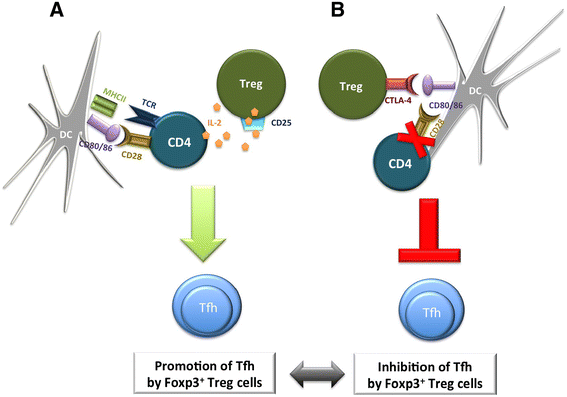Regulatory T cells and control of the germinal centre response
- PMID: 25606598
- PMCID: PMC4289055
- DOI: 10.1186/s13075-014-0471-7
Regulatory T cells and control of the germinal centre response
Abstract
Germinal centres (GCs) are specialised lymphoid microenvironments that form in secondary B-cell follicles upon exposure to T-dependent antigens. In the GC, clonal expansion, selection and differentiation of GC B cells result in the production of high-affinity plasma cells and memory B cells that provide protection against subsequent infection. The GC is carefully regulated to fulfil its critical role in defence against infection and to ensure that immunological tolerance is not broken in the process. The GC response can be controlled by a number of mechanisms, one of which is by forkhead box p3 expressing regulatory T (Treg) cells, a suppressive population of CD4+ T cells. A specialised subset of Treg cells - follicular regulatory T (Tfr) cells - form after immunisation and are able to access the GC, where they control the size and output of the response. Our knowledge of Treg cell control of the GC is expanding. In this review we will discuss recent advances in the field, with a particular emphasis on the differentiation and function of Tfr cells in the GC.
Figures



References
-
- Junt T, Moseman EA, Iannacone M, Massberg S, Lang PA, Boes M, Fink K, Henrickson SE, Shayakhmetov DM, Di Paolo NC, van Rooijen N, Mempel TR, Whelan SP, von Andrian UH. Subcapsular sinus macrophages in lymph nodes clear lymph-borne viruses and present them to antiviral B cells. Nature. 2007;450:110–114. doi: 10.1038/nature06287. - DOI - PubMed
Publication types
MeSH terms
Substances
Grants and funding
LinkOut - more resources
Full Text Sources
Other Literature Sources
Research Materials
Miscellaneous

